
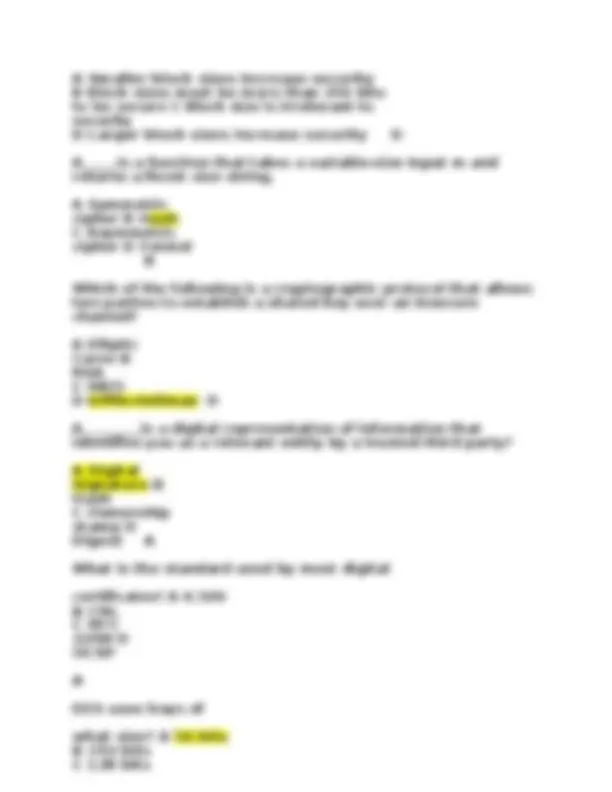
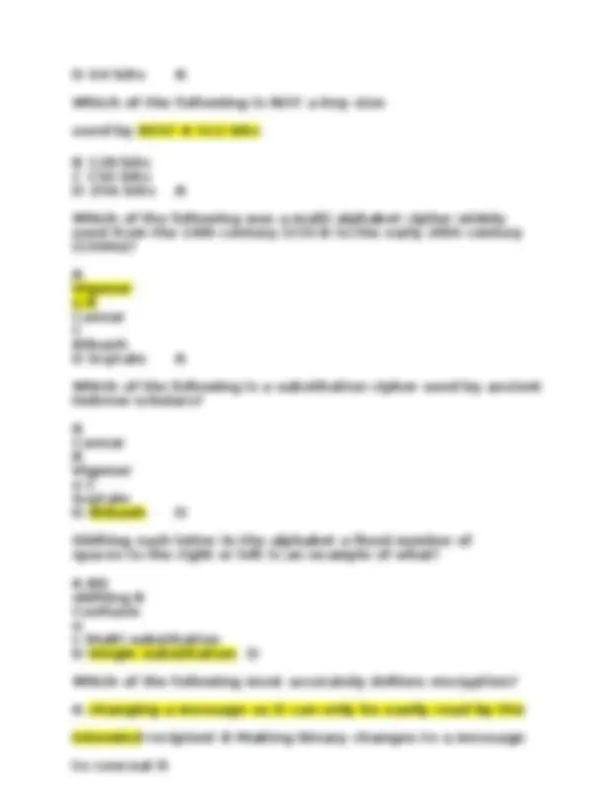
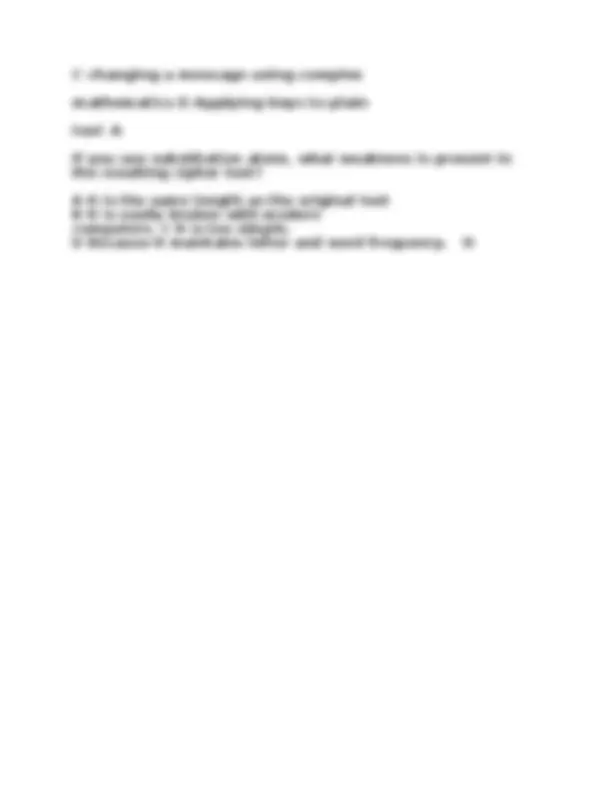
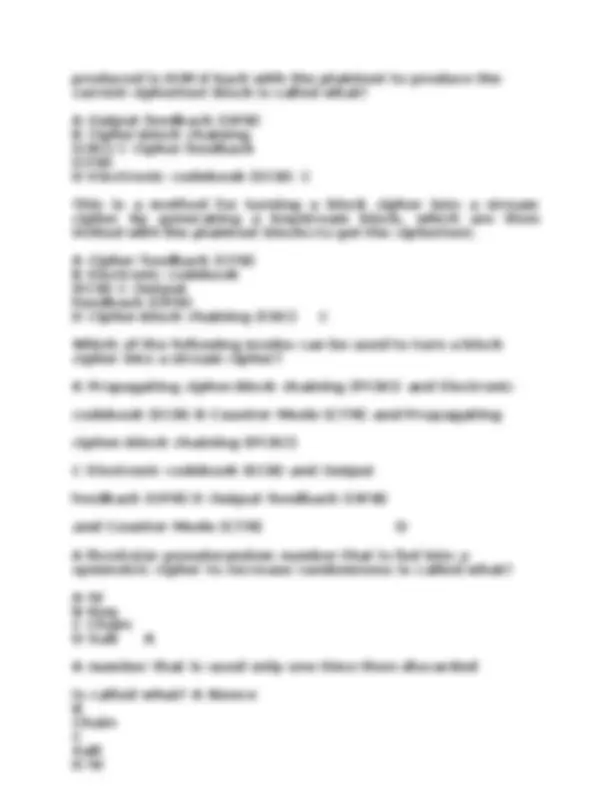

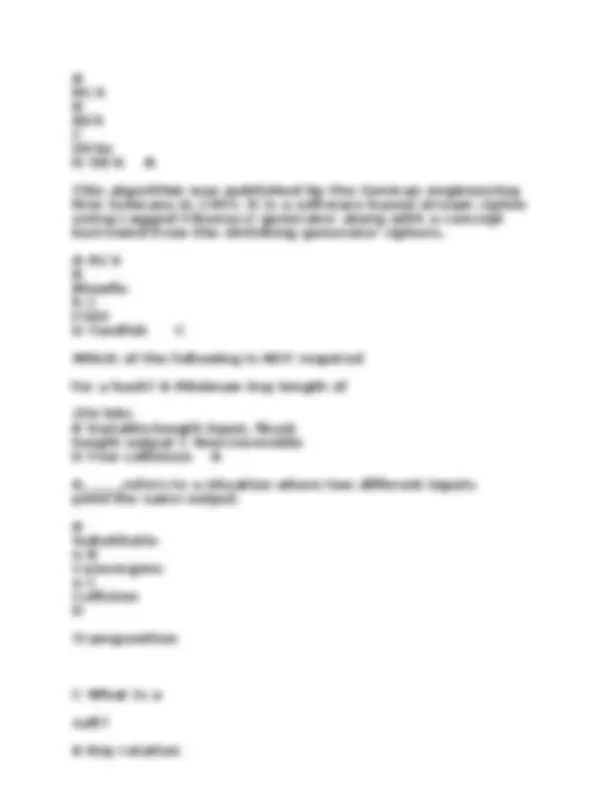

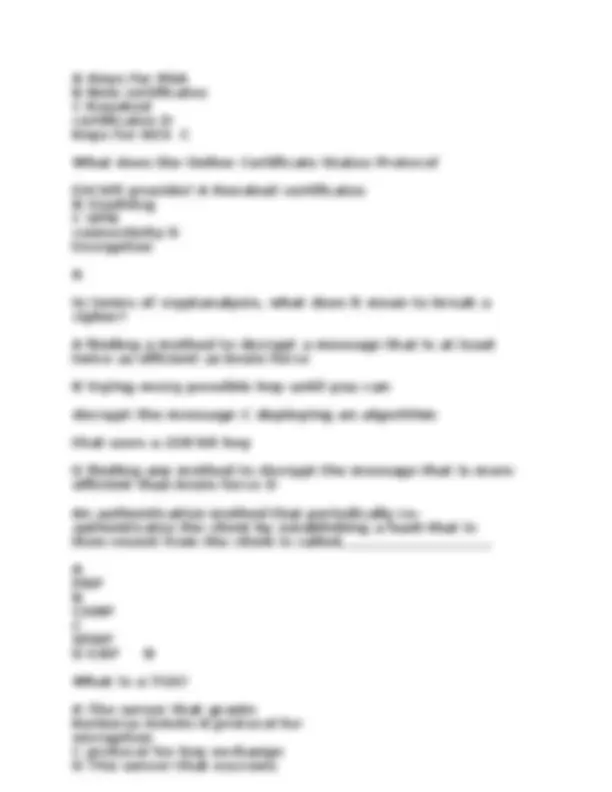
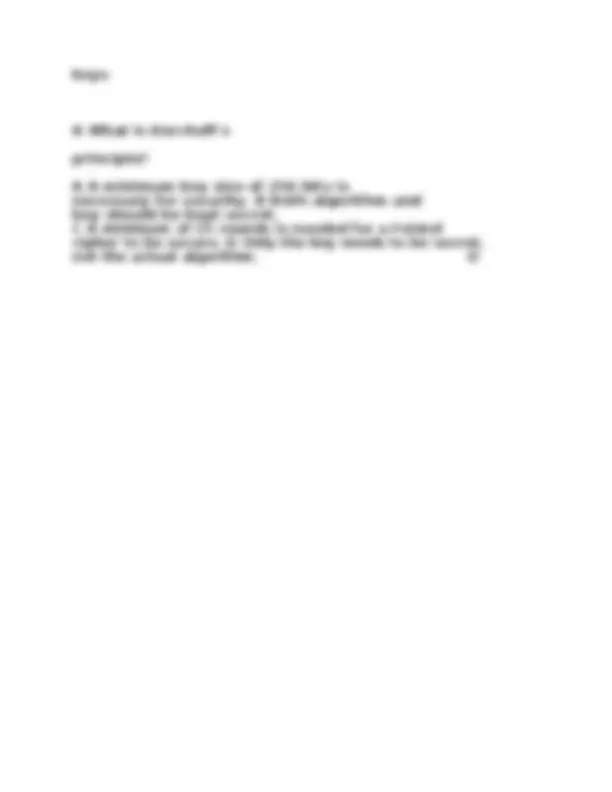
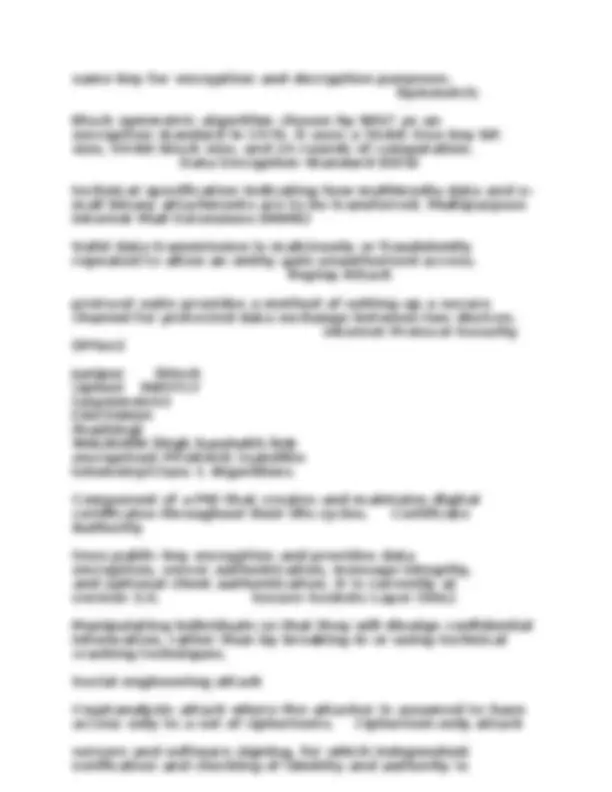
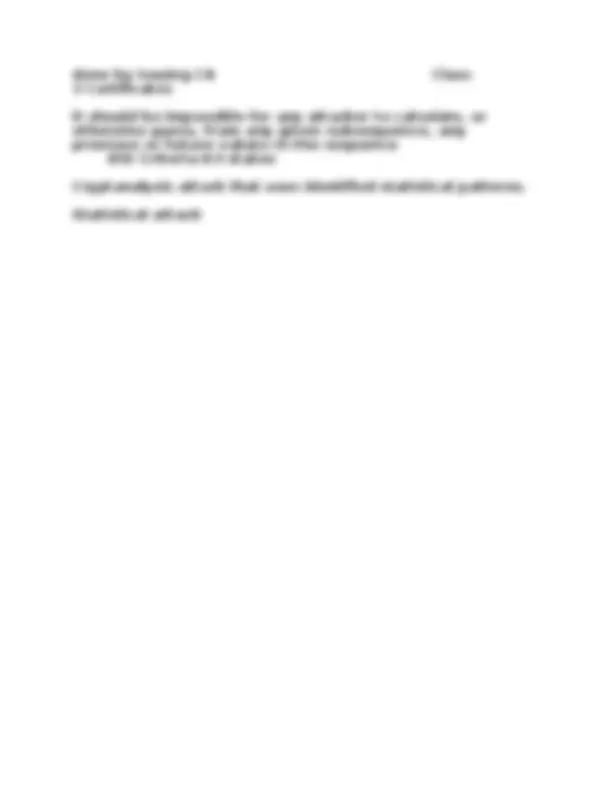
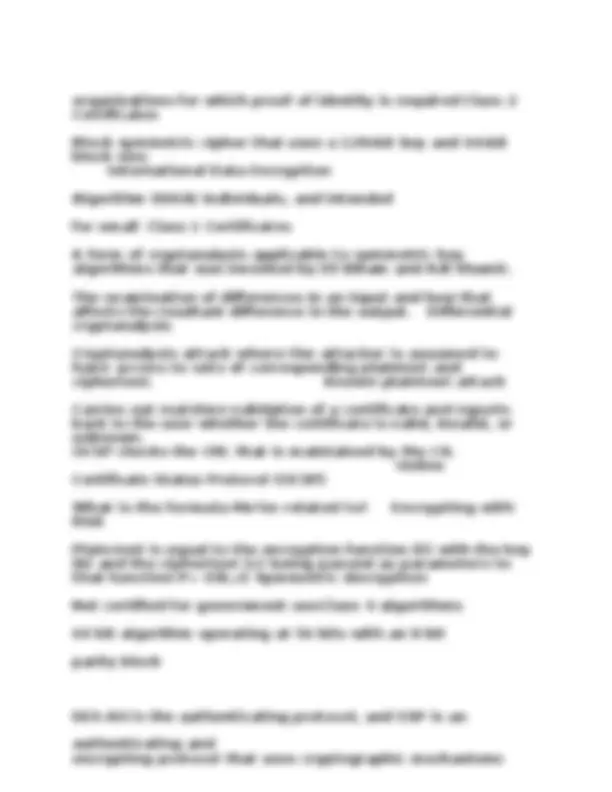
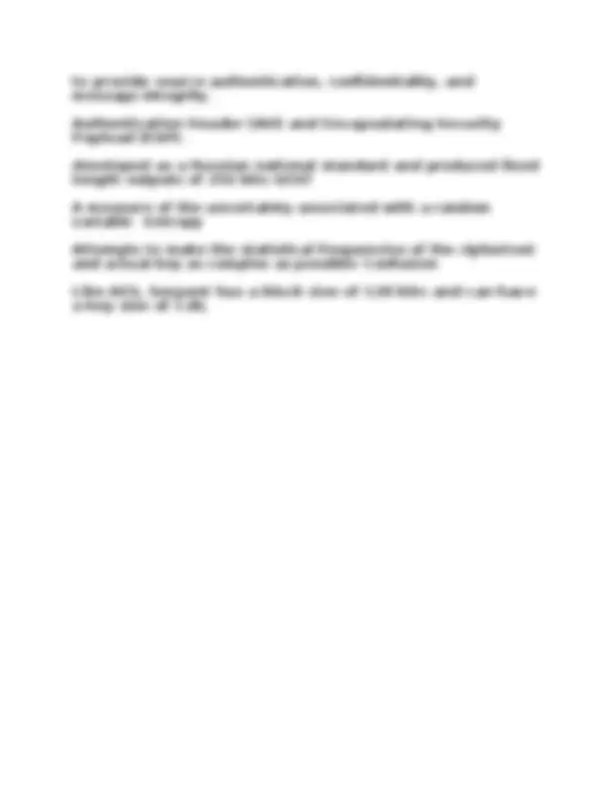
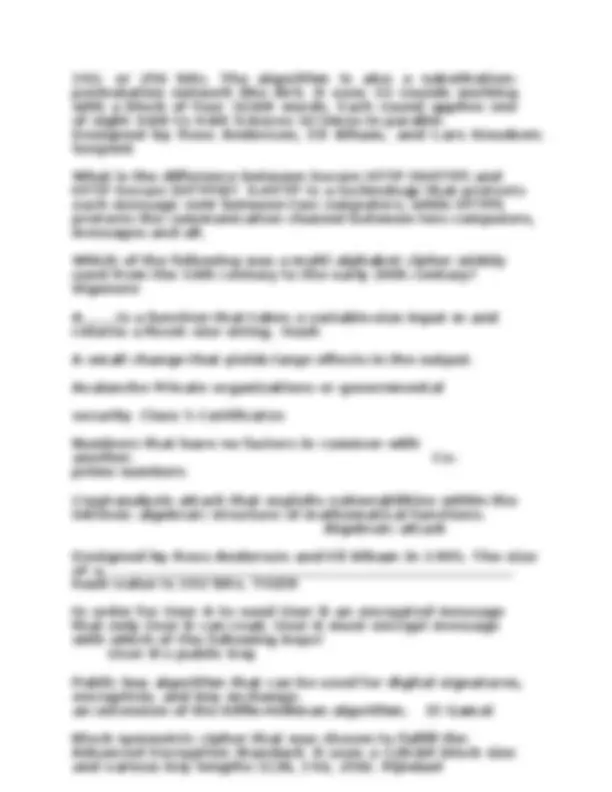

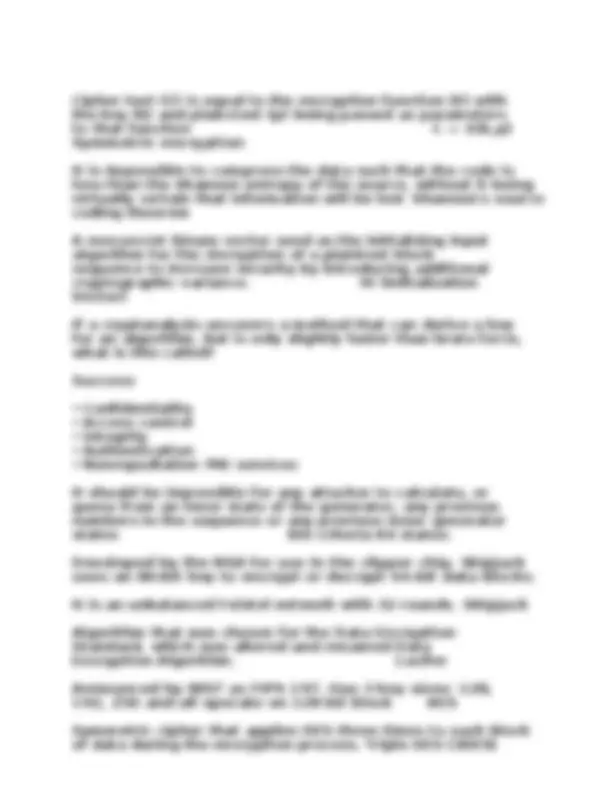

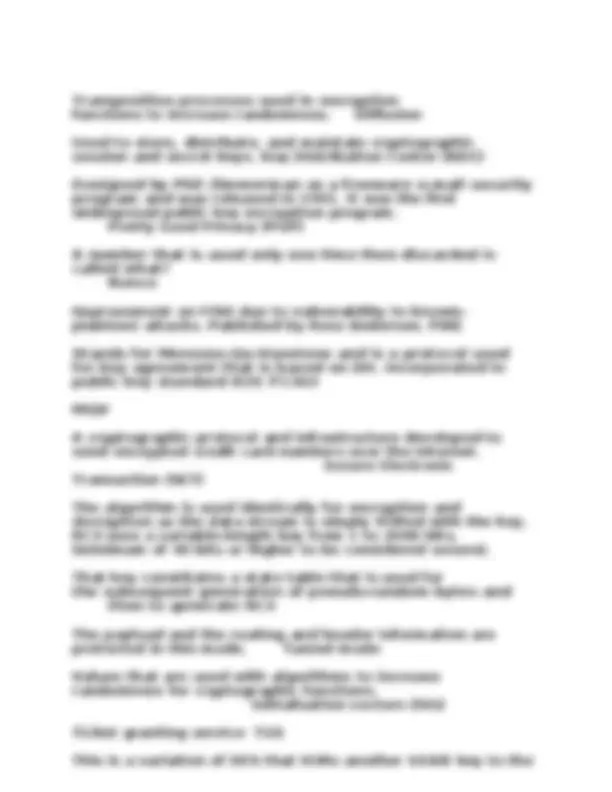

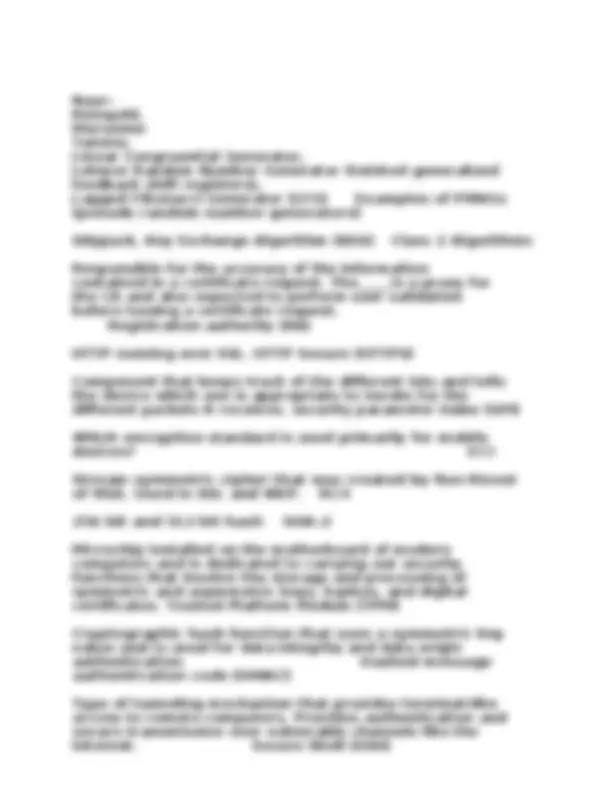

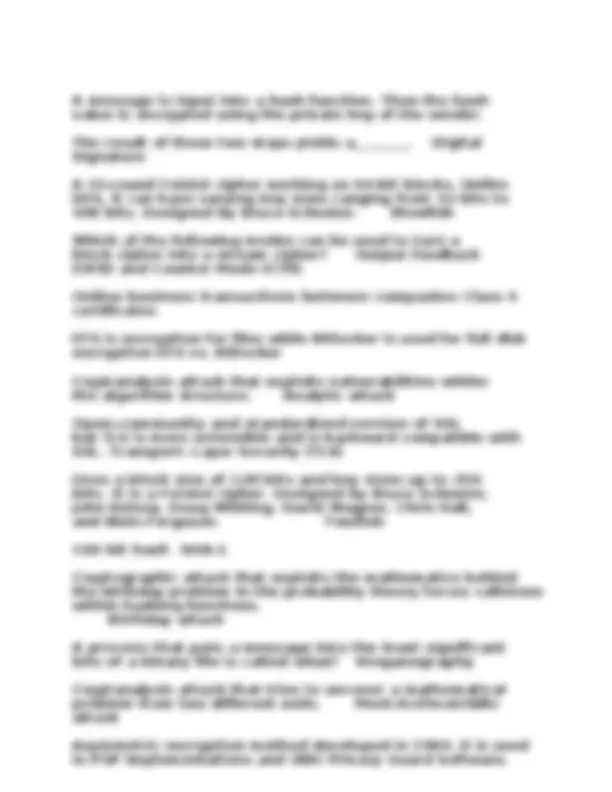

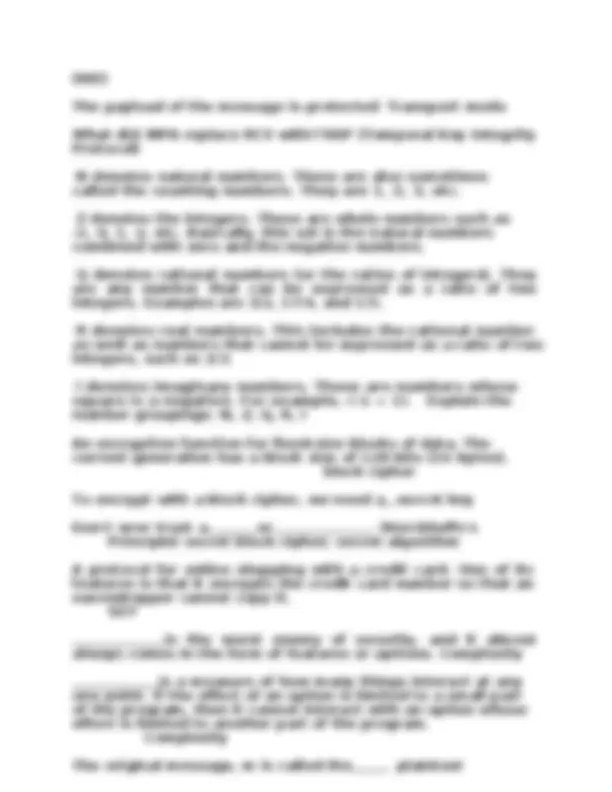
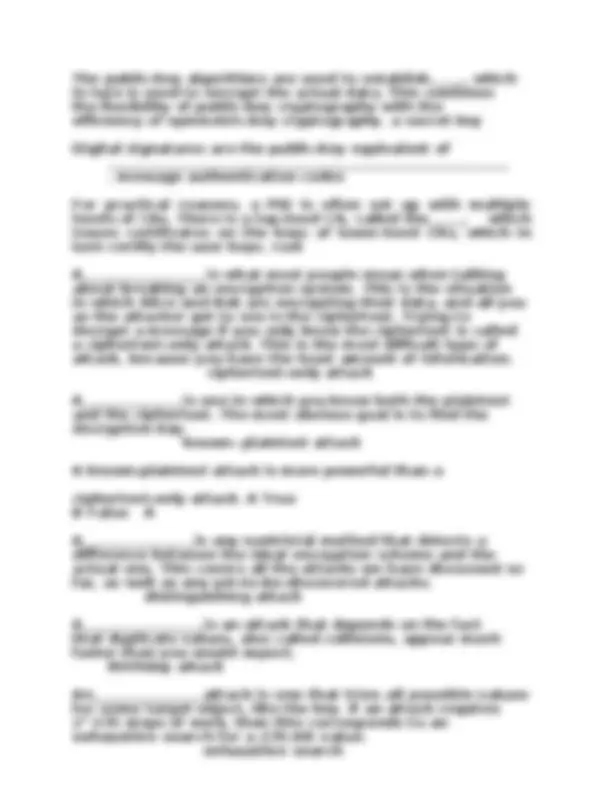

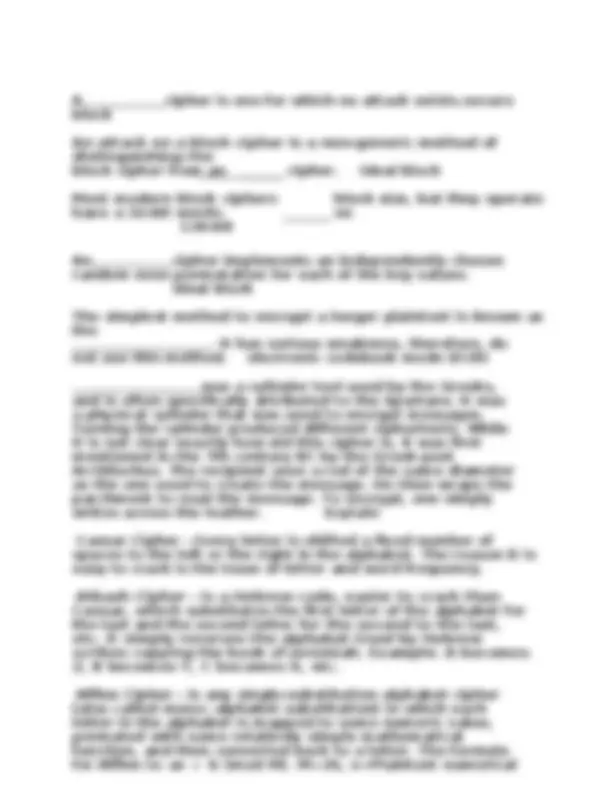

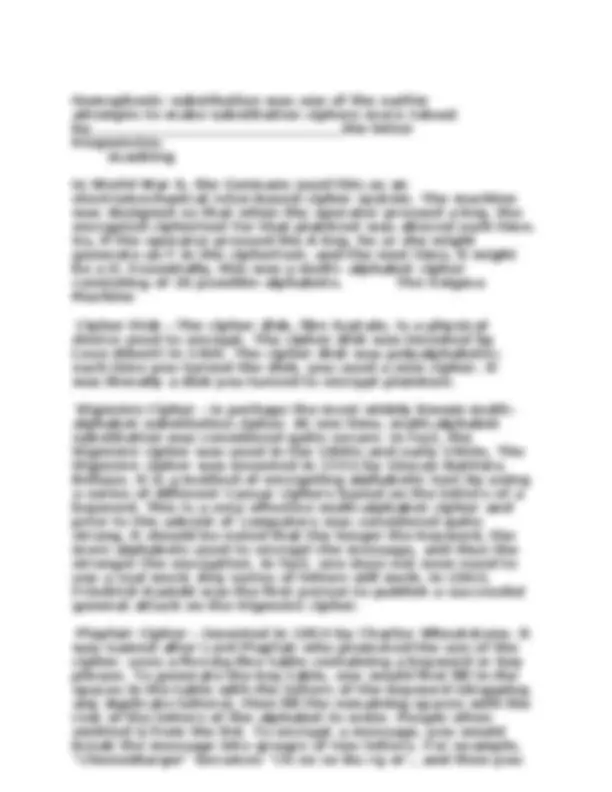
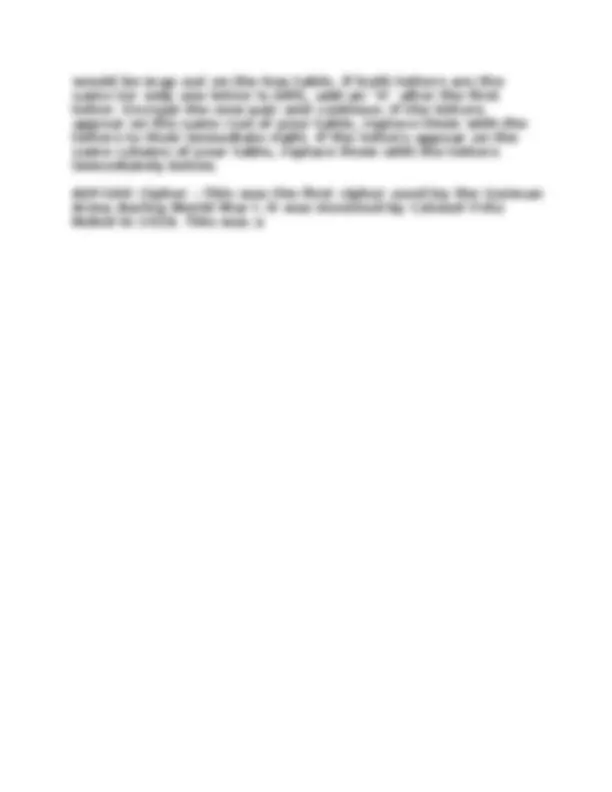
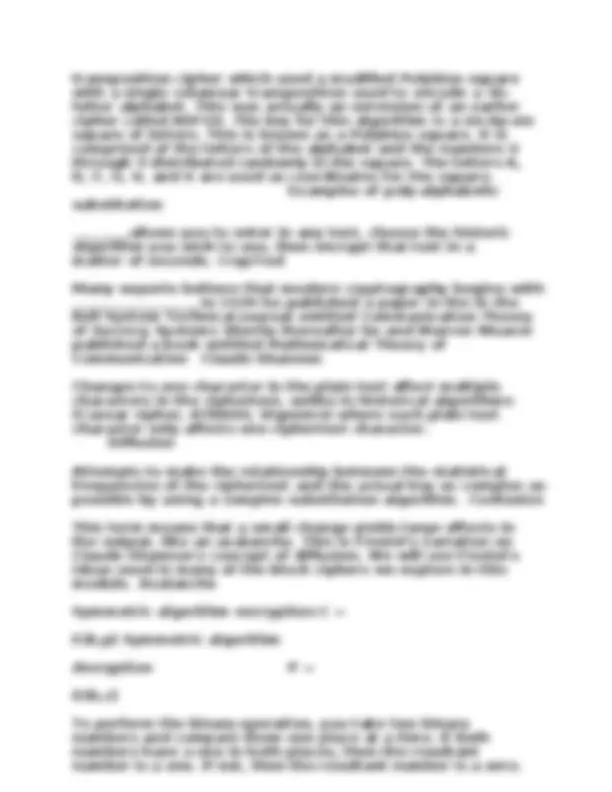
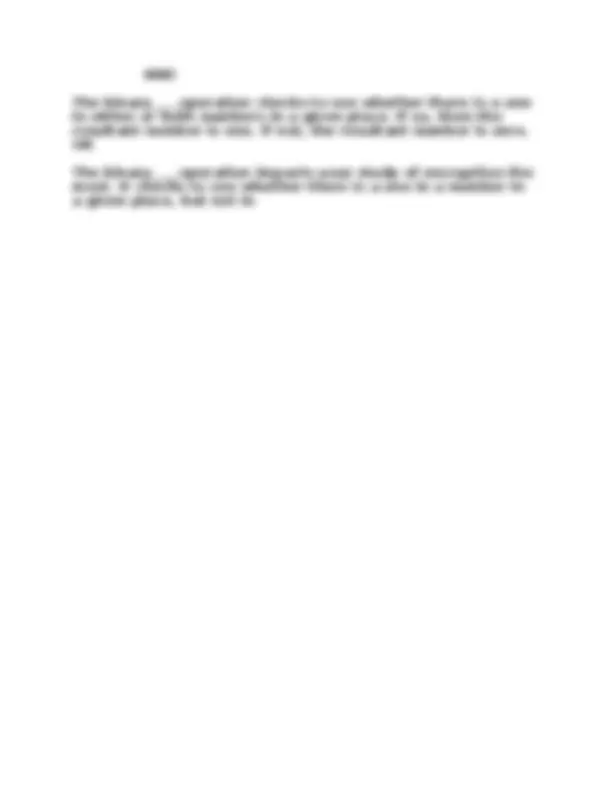
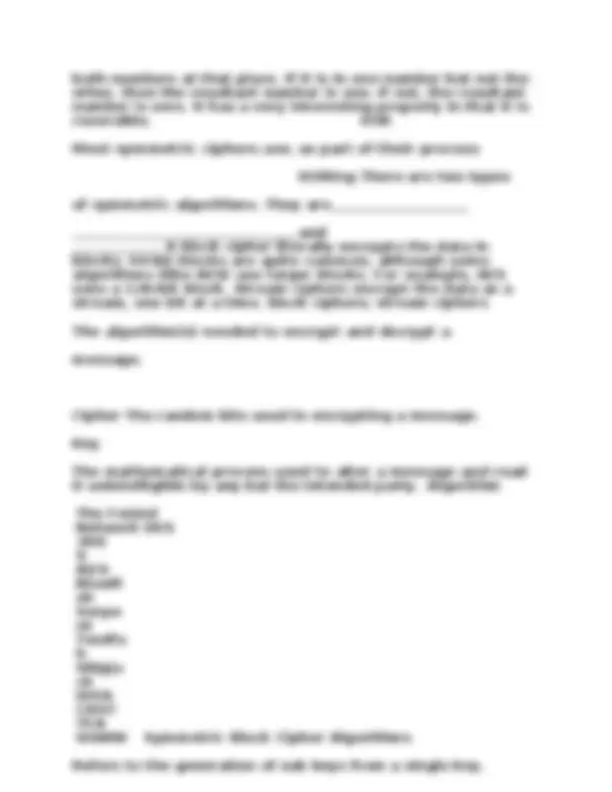
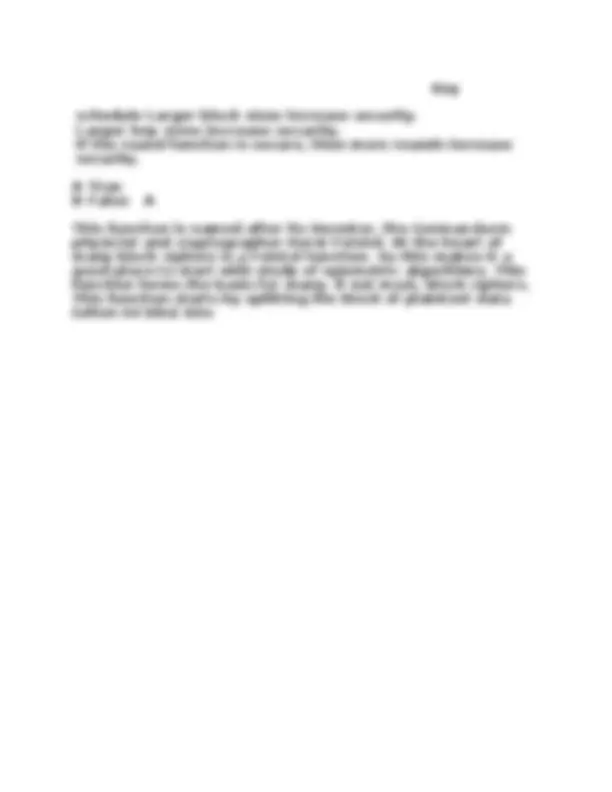
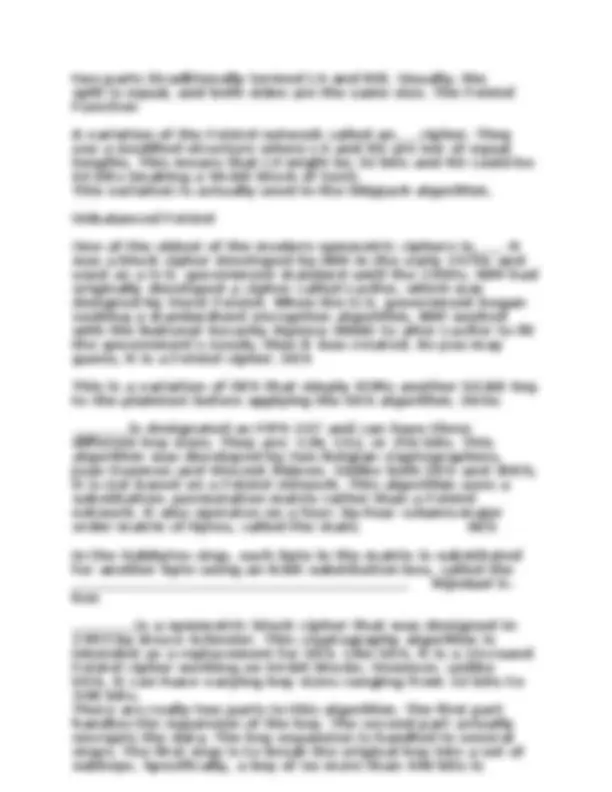
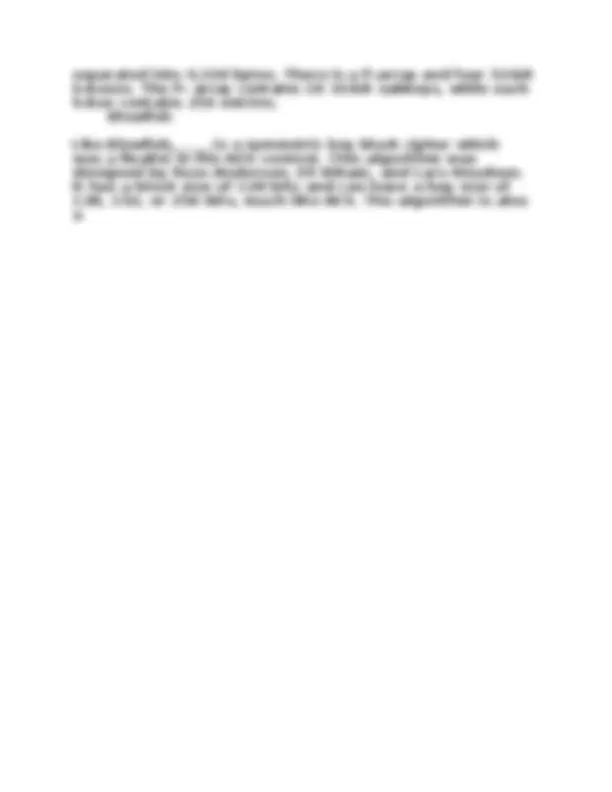
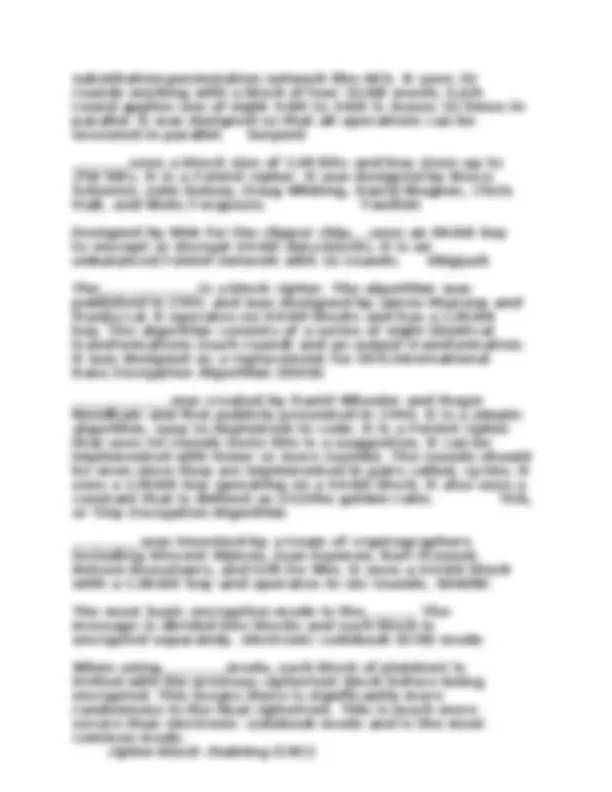

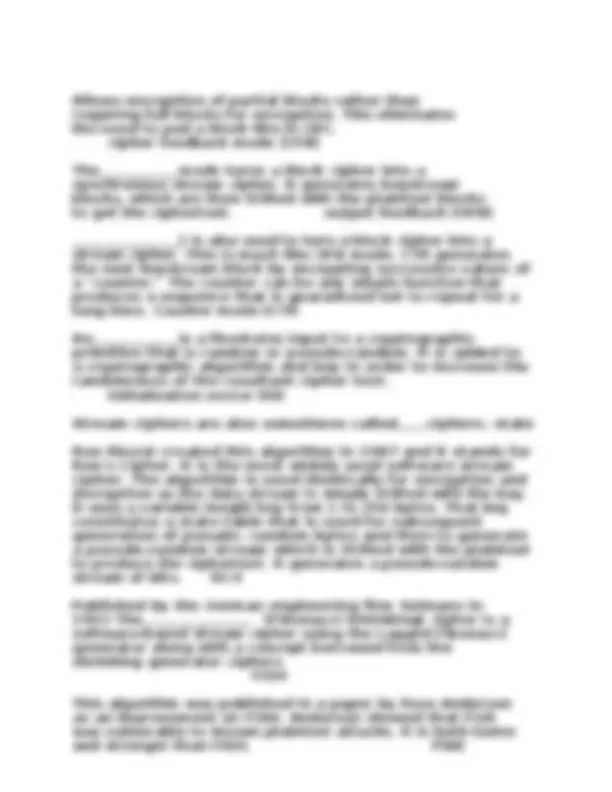

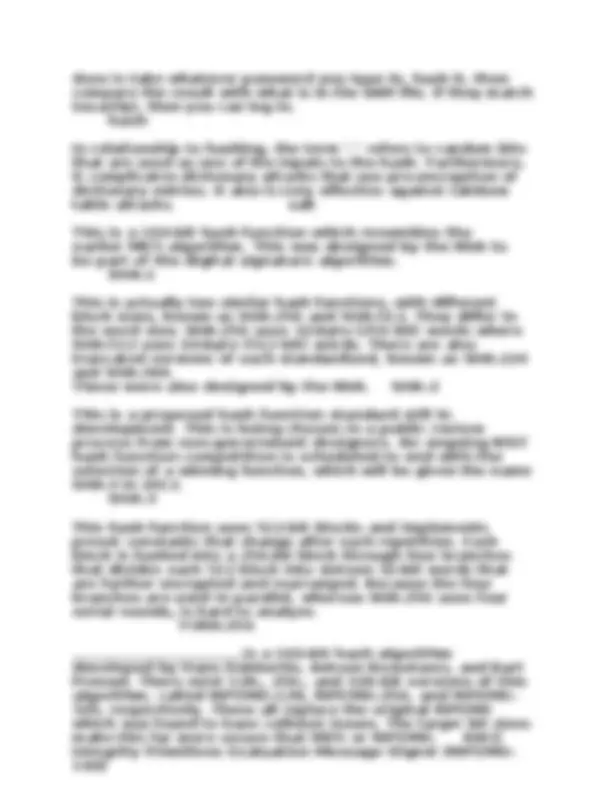
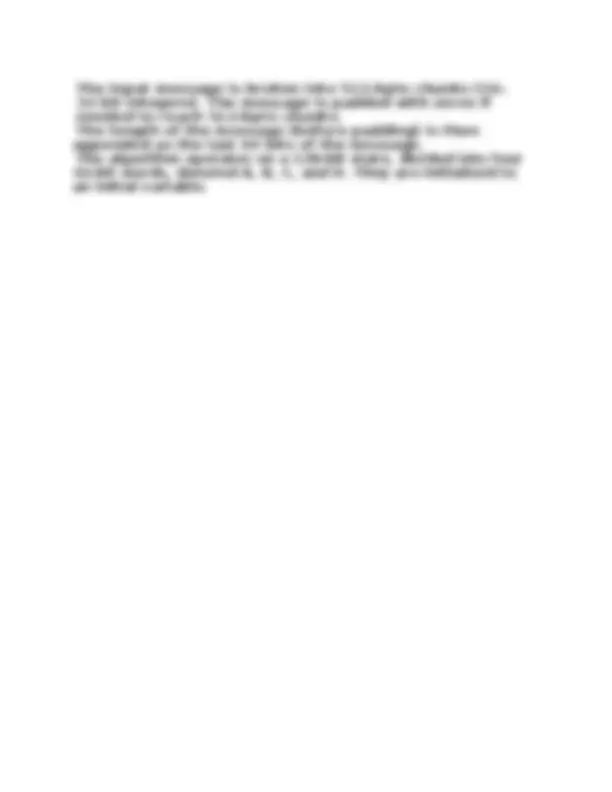
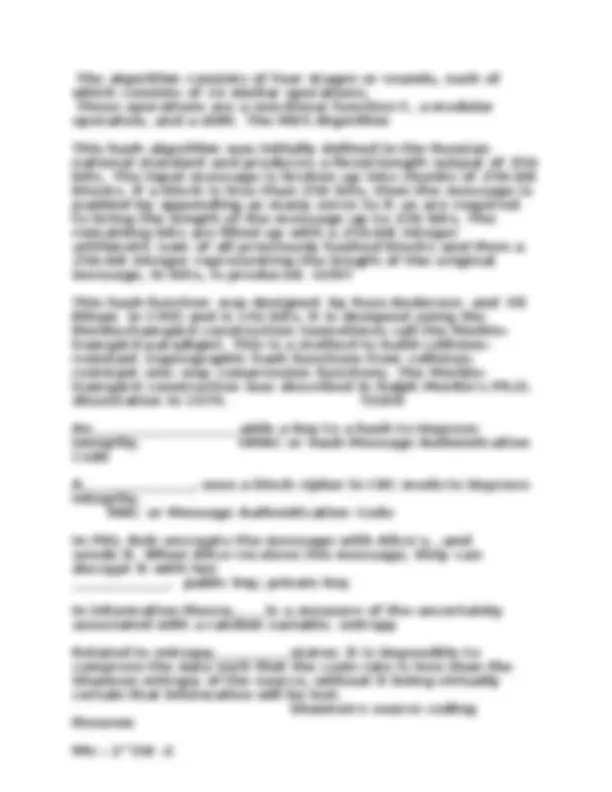

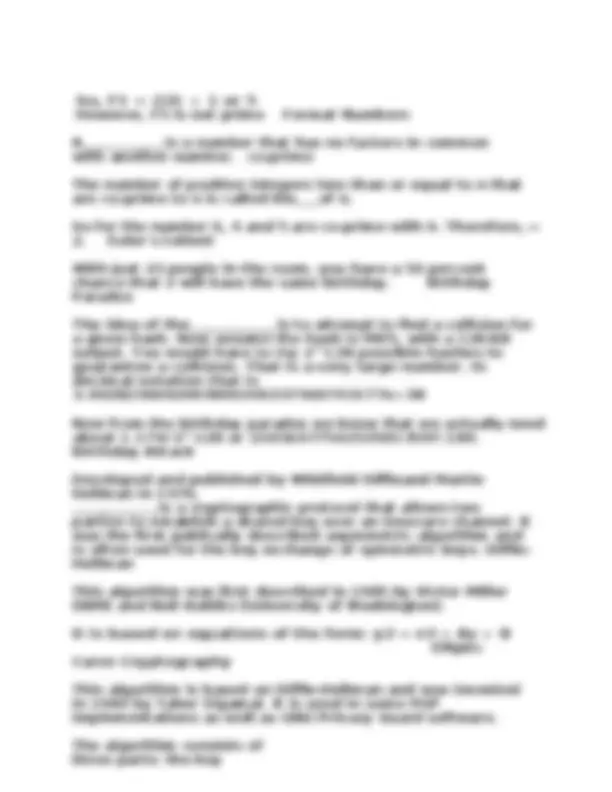

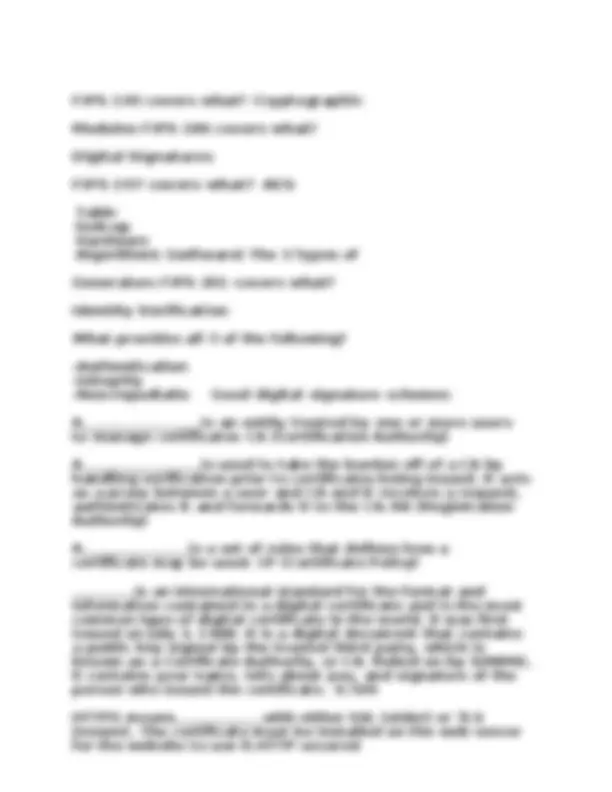

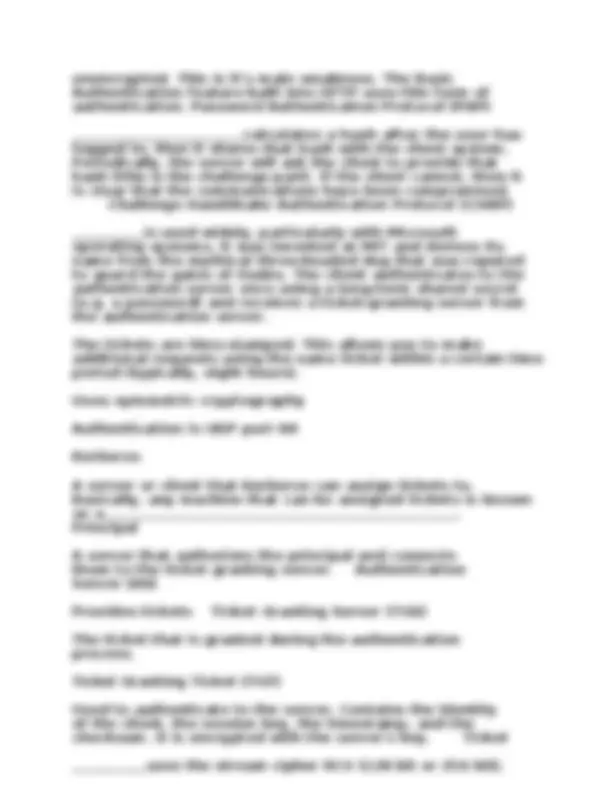

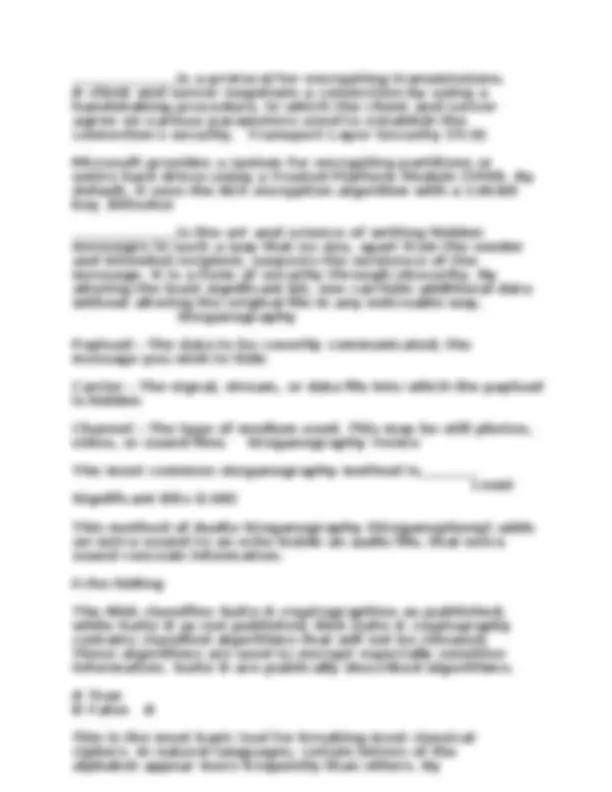

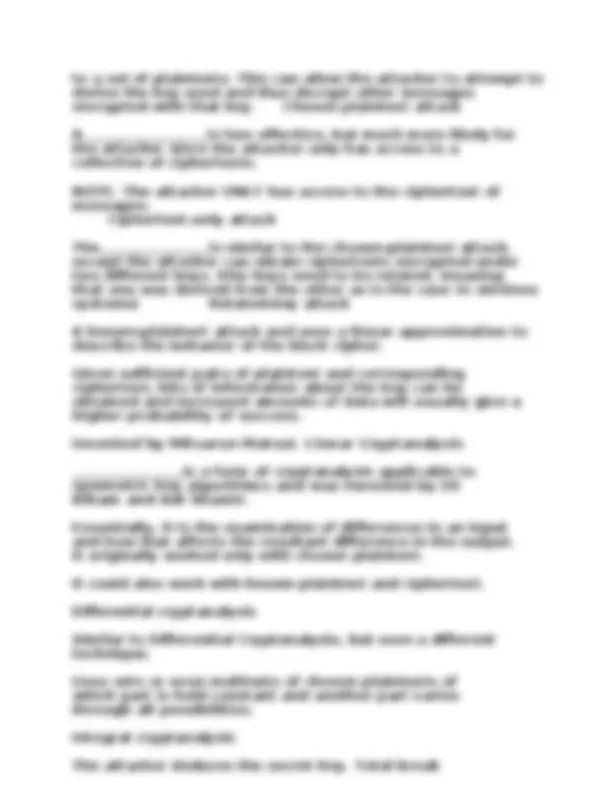

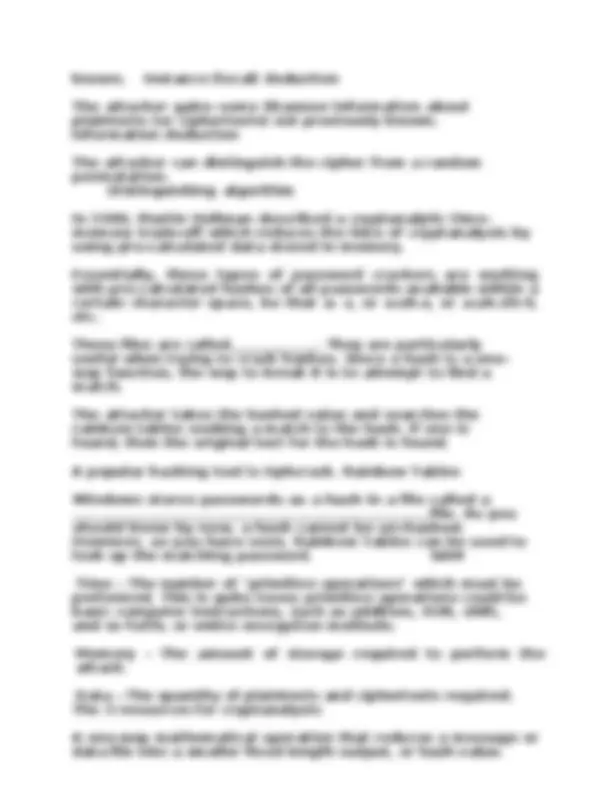




Study with the several resources on Docsity

Earn points by helping other students or get them with a premium plan


Prepare for your exams
Study with the several resources on Docsity

Earn points to download
Earn points by helping other students or get them with a premium plan
Community
Ask the community for help and clear up your study doubts
Discover the best universities in your country according to Docsity users
Free resources
Download our free guides on studying techniques, anxiety management strategies, and thesis advice from Docsity tutors
A list of questions and answers related to cryptography. It covers topics such as encryption algorithms, block sizes, hash functions, Feistel ciphers, Kerchoff's principle, steganography, and more. useful for students studying cryptography or preparing for exams in this field.
Typology: Exams
1 / 65

This page cannot be seen from the preview
Don't miss anything!


























































What type of encryption uses different keys to encrypt and decrypt the message? A Symmetri c B Private key C Secure D Asymmetric D The most widely used asymmetric encryption algorithm is what? A RSA B Vigener e C DES D Caesar Cipher A Original, unencrypted information is referred to as
. A text B plaintext C cleantex t D ciphertext B Which of the following is NOT an asymmetric system? A PGP B RSA C SSL D DES D
In order for User A to send User B an encrypted message that only User B can read, User A must encrypt message with which of the following keys? A User A's public key B User A's private key C User B's public key D User B's private key C The greatest weakness with symmetric algorithms is
. A They are less secure than asymmetric B The problem of key exchange C They are slower than asymmetric D The problem of generating keys B Which of the following is generally true about block sizes?
D 64 bits A Which of the following is NOT a key size used by AES? A 512 bits B 128 bits C 192 bits D 256 bits A Which of the following was a multi alphabet cipher widely used from the 16th century (1553) to the early 20th century (1900s)? A Vigener e B Caesar C Atbash D Scytale A Which of the following is a substitution cipher used by ancient Hebrew scholars? A Caesar B Vigener e C Scytale D Atbash D Shifting each letter in the alphabet a fixed number of spaces to the right or left is an example of what? A Bit shifting B Confusio n C Multi substitution D Single substitution D Which of the following most accurately defines encryption? A changing a message so it can only be easily read by the intended recipient B Making binary changes to a message to conceal it
C changing a message using complex mathematics D Applying keys to plain text A If you use substitution alone, what weakness is present in the resulting cipher text? A It is the same length as the original text B It is easily broken with modern computers. C It is too simple. D Because it maintains letter and word frequency. D
codebook (ECB) D Cipher feedback (CFB) B The process wherein the ciphertext block is encrypted then the ciphertext
produced is XOR'd back with the plaintext to produce the current ciphertext block is called what? A Output feedback (OFB) B Cipher-block chaining (CBC) C Cipher feedback (CFB) D Electronic codebook (ECB) C This is a method for turning a block cipher into a stream cipher by generating a keystream block, which are then XORed with the plaintext blocks to get the ciphertext. A Cipher feedback (CFB) B Electronic codebook (ECB) C Output feedback (OFB) D Cipher-block chaining (CBC) C Which of the following modes can be used to turn a block cipher into a stream cipher? A Propagating cipher-block chaining (PCBC) and Electronic codebook (ECB) B Counter Mode (CTR) and Propagating cipher-block chaining (PCBC) C Electronic codebook (ECB) and Output feedback (OFB) D Output feedback (OFB) and Counter Mode (CTR) D A fixed-size pseudorandom number that is fed into a symmetric cipher to increase randomness is called what? A IV B Key C Chain D Salt A A number that is used only one time then discarded is called what? A Nonce B Chain C Salt D IV
DESx D DES A This algorithm was published by the German engineering firm Seimans in 1993. It is a software based stream cipher using Lagged Fibonacci generator along with a concept borrowed from the shrinking generator ciphers. A RC B Blowfis h C FISH D Twofish C Which of the following is NOT required for a hash? A Minimum key length of 256 bits B Variable-length input, fixed- length output C Non-reversible D Few collisions A A refers to a situation where two different inputs yield the same output. A Substitutio n B Convergenc e C Collision D Transposition C What is a salt? A Key rotation
B Random bits intermixed with a hash to increase randomness and reduce collisions. C Random bits intermixed with a symmetric cipher to increase randomness and make it more secure. D Key whitening B RFC 1321 describes what hash? A RIPEMD B SHA C GOST
certificates D What is contained in a CRL?
A Keys for RSA B New certificates C Revoked certificates D Keys for AES C What does the Online Certificate Status Protocol (OCSP) provide? A Revoked certificates B Hashing C VPN connectivity D Encryption A In terms of cryptanalysis, what does it mean to break a cipher? A finding a method to decrypt a message that is at least twice as efficient as brute force B trying every possible key until you can decrypt the message C deploying an algorithm that uses a 228 bit key D finding any method to decrypt the message that is more efficient than brute force D An authentication method that periodically re- authenticates the client by establishing a hash that is then resent from the client is called. A PAP B CHAP C SPAP D EAP B What is a TGS? A The server that grants Kerberos tickets B protocol for encryption C protocol for key exchange D The server that escrows
Which of the following is a fundamental principle of cryptography that holds that the algorithm can be publically disclosed without damaging security? A Babbage's principle B Kerkchoff's principle C Vigenere's principle D Shamir's principle B A process that puts a message into the least significant bits of a binary file is called what? A Symmetric cryptography B Masking C Steganography D Asymmetric cryptography C If you wished to see a list of revoked certificates from a CA, where would you look? A CRL B CA C RFC D RA A Which of the following is generally true about block ciphers? A Secret block ciphers should be trusted. B Block ciphers permute the bits of the input plaintext. C The plaintext and ciphertext are always the same size. D A block cipher is an encryption function for variable-size blocks of data. C What does the OCSP protocol provide? A encryption B VPN connectivity C hashing D a real time protocol for verifying certificates D
U.S. encryption standard that replaced DES. Block symmetric cipher that uses 128-bit block sizes and various key lengths (128, 192, 256). AES DES, 3DES, SHA, AES (some AES implementations are Type I) Class 3 Algorithms Encryption method where the sender and receiver use an instance of the
done by issuing CA Class 3 Certificates it should be impossible for any attacker to calculate, or otherwise guess, from any given subsequence, any previous or future values in the sequence BSI Criteria K3 states Cryptanalysis attack that uses identified statistical patterns. Statistical attack
organizations for which proof of identity is required Class 2 Certificates Block symmetric cipher that uses a 128-bit key and 64-bit block size. International Data Encryption Algorithm (IDEA) individuals, and intended for email Class 1 Certificates A form of cryptanalysis applicable to symmetric key algorithms that was invented by Eli Biham and Adi Shamir. The examination of differences in an input and how that affects the resultant difference in the output. Differential cryptanalysis Cryptanalysis attack where the attacker is assumed to have access to sets of corresponding plaintext and ciphertext. Known plaintext attack Carries out real-time validation of a certificate and reports back to the user whether the certificate is valid, invalid, or unknown. OCSP checks the CRL that is maintained by the CA. Online Certificate Status Protocol (OCSP) What is the formula Me%n related to? Encrypting with RSA Plain-text is equal to the encryption function (E) with the key (k) and the ciphertext (c) being passed as parameters to that function P= E(k,c) Symmetric decryption Not certified for government useClass 4 algorithms 64 bit algorithm operating at 56 bits with an 8 bit parity block DES AH is the authenticating protocol, and ESP is an authenticating and encrypting protocol that uses cryptographic mechanisms